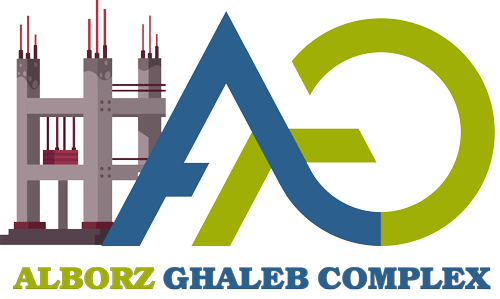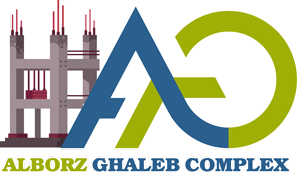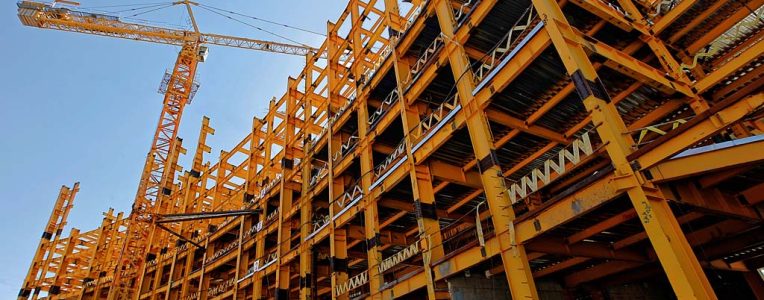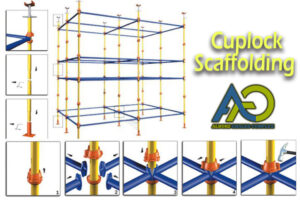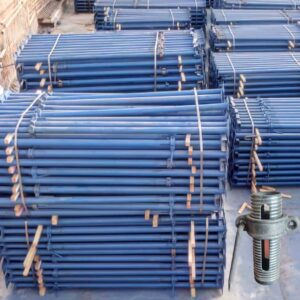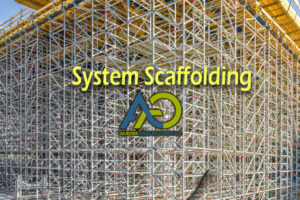Steel buildings are a cornerstone of modern construction, valued for their remarkable strength, flexibility, and rapid installation. These structures are employed in a wide range of projects, from industrial warehouses to towering skyscrapers. However, like any construction system, steel buildings come with their own set of advantages and disadvantages that require careful consideration.
Why Choose Steel Buildings?
Steel buildings are favored in construction due to their technical and economic benefits. Designed with three core principles in mind—safety, aesthetics, and economy—they meet diverse project requirements. In many regions, including areas with strict seismic regulations, understanding the pros and cons of steel structures is critical for owners, engineers, and architects. This article provides a thorough analysis of these factors, ensuring you have the insights needed to make informed decisions.
Advantages of Steel Buildings
Thanks to the inherent properties of steel, these buildings are ideal for large-scale and complex projects. Below, we outline the key advantages of steel structures:
1. High Strength and Superior Strength-to-Weight Ratio
Steel boasts exceptional strength, offering a higher strength-to-weight ratio compared to concrete. This makes steel buildings suitable for wide spans, such as in warehouses, or for high-rise structures and sites with poor soil conditions. For instance, integrating Concrete Modular Metal Formwork in complementary concrete components enhances precision and quality in such projects.
2. Uniform and Reliable Properties
Steel is manufactured in large factories under stringent quality controls, ensuring consistent properties. This reliability allows engineers to use smaller safety factors in calculations, leading to material savings and cost efficiency. Unlike concrete, steel’s properties remain unaffected by external factors like humidity or temperature, ensuring predictable performance.
3. Long-Term Durability
With proper maintenance, steel buildings can remain functional for decades. The durability of steel makes it a sustainable choice, particularly for long-term projects like industrial facilities or commercial complexes, where repair costs need to be minimized.
4. Elastic Properties and Predictable Behavior
Steel adheres closely to Hooke’s Law up to high stress levels, making it a reliable material for precise engineering calculations. Unlike concrete, which may exhibit variable behavior, steel’s predictable elastic properties enable safer and more accurate designs.
5. Ductility and Resistance to Dynamic Forces
Steel’s ductility allows it to absorb concentrated stresses and dynamic forces, such as those from earthquakes. This reduces the risk of sudden failure, enhancing structural safety. In contrast, concrete’s brittle nature makes it less effective against such forces, making steel a preferred choice in seismic zones.
6. Material Continuity and Homogeneity
Steel components are homogeneous and continuous, offering superior resistance to seismic forces. Concrete, however, may develop cracks during earthquakes, compromising the structure’s integrity. This makes steel buildings a safer option in earthquake-prone regions.
7. Balanced Strength in Tension, Compression, and Shear
Steel performs consistently well in tension, compression, and shear, unlike concrete, which is weak in tension and requires reinforcement. This balanced strength allows for more flexible design options, especially in complex loading scenarios.
8. Resilience Against Explosions
In the event of an explosion, steel buildings are less likely to collapse completely, as non-load-bearing walls separate from the structural frame. This resilience contrasts with concrete structures, where wall failures can lead to total collapse, making steel a safer choice for high-risk facilities.
9. Ease of Strengthening and Retrofitting
Weak components in steel buildings can be reinforced using welding, riveting, or bolting. This flexibility allows for corrections of design errors, updates to regulations, or the addition of new structural elements, making steel buildings adaptable to evolving needs.
10. Fast and Easy Installation
Steel components are installed significantly faster than concrete elements, and construction can proceed in various weather conditions. Using Concrete Formwork for complementary concrete elements further accelerates the process, reducing labor and time costs.
11. Minimal Material Waste
Factory-produced steel components result in minimal material waste, lowering project costs. This efficiency is particularly valuable in large-scale projects where material savings can have a significant financial impact.
12. Lighter Weight
Steel buildings typically weigh between 245 and 390 kg per square meter, compared to 480 to 780 kg for concrete structures. This lighter weight reduces dead loads and foundation costs, making steel an economical choice for large projects.
13. Reduced Space Occupancy
Steel columns and beams are smaller than their concrete counterparts, freeing up more usable space. This is a critical advantage in residential and commercial projects, such as urban apartments or office buildings, where space is at a premium.
14. Lower Seismic Coefficient
The lighter weight of steel buildings results in a lower seismic coefficient, improving their performance during earthquakes. This makes steel structures particularly advantageous in seismic zones, enhancing occupant safety.
Disadvantages of Steel Buildings
Despite their many benefits, steel buildings face challenges that must be addressed during design and construction:
1. Vulnerability to High Temperatures
Steel loses its strength at temperatures between 500 and 600°C, posing a risk to structural stability. Fire-resistant coatings, such as intumescent paints or insulating panels, can mitigate this issue, but they add to project costs.
2. Corrosion and Maintenance Needs
Steel is prone to corrosion when exposed to moisture or harsh weather, increasing maintenance costs. Anti-corrosion coatings, galvanization, and regular inspections can reduce this risk, but proper design to prevent water accumulation is also essential.
3. Susceptibility to Buckling
Due to their slender dimensions, steel components are prone to buckling under compressive loads. Careful design, using appropriate sections like box profiles or composite sections, can minimize this risk.
4. Weld Imperfections
Poor welding, due to lack of skilled labor, outdated equipment, or inadequate supervision, can compromise structural integrity. Using bolts or factory-produced components reduces this risk, while non-destructive testing (e.g., ultrasonic or radiographic tests) ensures weld quality.
Honeycomb Beams: An Innovation in Steel Structures
Honeycomb beams, characterized by hexagonal openings in their web, allow for increased beam height and bending resistance with reduced weight. These beams are created by cutting and welding standard I-beams and are widely used in bridges, warehouses, and industrial buildings.
Advantages of Honeycomb Beams
- Enhanced Bending Resistance: Increased beam height boosts moment of inertia and bending capacity.
- Reduced Weight: Lighter beams lower material and transportation costs.
- Utility Passages: Web openings allow for the passage of pipes and electrical cables.
- Cost Efficiency: Reduced material usage translates to lower project costs.
Disadvantages of Honeycomb Beams
The web openings in honeycomb beams can weaken their shear resistance at supports. To address this, some openings are filled with steel plates. Additionally, using Concrete Formwork Plastic Systems for complementary concrete elements can streamline construction and improve structural integration.
Construction Methods for Honeycomb Beams
Honeycomb beams are typically constructed using two methods:
- Pannier Cutting: The I-beam is cut using a template, and the two halves are welded together.
- Letiska Cutting: This method involves more precise cuts and advanced welding, resulting in higher quality beams.
To enhance strength, some beams incorporate intermediate plates or concrete infill in the openings, creating a composite behavior that improves rigidity and resistance.
Types of Connections in Steel Buildings
Connections are critical for transferring forces and ensuring structural stability in steel buildings. The main types of connections include:
1. Beam-to-Column Connections
These connections can be rigid (moment-resisting) or pinned. Rigid connections include:
- Double Parallel Plates: Ideal for transferring moments and torsional forces.
- Double T-Sections: Used in projects with moderate loads.
- End Plate on Column: Suitable for complex, high-load connections.
Rigid connections are used for moment transfer, while pinned connections are simpler and used for lighter loads.
2. Base Plate Connections
Base plates transfer column loads to the foundation, requiring high resistance to shear and bending forces. Using Concrete Formwork for foundation construction ensures precision and efficiency.
3. Double I-Beam Connections
To enhance strength, two I-beams are connected to form a composite beam or column, commonly used in heavy-duty projects with large spans.
4. Bracing Connections
Bracings increase lateral stability against wind and earthquakes. Their connections must be meticulously designed to ensure uniform force distribution.
Role of Modular Formwork in Steel Buildings
Modular formwork systems, such as Concrete Modular Metal Formwork and Concrete Formwork Plastic Systems, enhance the quality and speed of constructing concrete elements that complement steel structures. These systems are flexible, reusable, and reduce material waste, making them ideal for large projects.
Benefits of Modular Formwork
- Faster Construction: Quick assembly and disassembly reduce project timelines.
- Cost Savings: Reusability lowers material costs.
- High Precision: Ensures consistent quality in concrete components.
- Versatility: Suitable for columns, walls, and foundations.
Earthquake Resistance in Steel Buildings
Earthquake resistance is a critical factor in steel building design. The lighter weight of steel structures reduces the seismic coefficient, while steel’s ductility allows it to absorb seismic energy. However, precise design and robust connections are essential to prevent localized failures.
Key Considerations for Seismic Design
- Bracing Systems: Enhance lateral resistance against seismic forces.
- Reinforced Connections: Prevent failure at critical points.
- Appropriate Sections: Minimize buckling risks.
- Composite Materials: Use concrete in critical areas to increase stiffness.
Steel vs. Concrete Buildings: A Comparative Analysis
Choosing between steel and concrete structures depends on project requirements, budget, environmental conditions, and regulatory constraints. Below, we compare the two systems:
Advantages of Steel Over Concrete
- Faster Construction: Steel installation is quicker than concrete casting.
- Lighter Weight: Reduces dead loads and foundation costs.
- Flexibility: Easier to reinforce or modify.
- Earthquake Resistance: Due to ductility and lower weight.
Advantages of Concrete Over Steel
- Fire Resistance: Concrete performs better at high temperatures.
- Lower Initial Costs: Concrete can be more economical in some projects.
- Corrosion Resistance: Concrete is less prone to environmental degradation.
How to Choose?
The choice between steel and concrete depends on project specifics. Steel is ideal for large spans or seismic zones, while concrete may be better for budget-conscious projects or humid environments. Consulting with engineers and evaluating project conditions is crucial for the right decision.
Emerging Technologies in Steel Construction
Advancements in technology are transforming steel construction, offering new ways to enhance performance and efficiency:
1. Advanced Fire-Resistant Coatings
Innovative coatings, such as nanotechnology-based paints or composite panels, significantly improve steel’s fire resistance, extending its structural integrity in extreme conditions.
2. Smart Monitoring Systems
Sensors embedded in steel structures enable real-time monitoring of issues like corrosion or cracks, allowing for proactive maintenance and extended lifespan.
3. Advanced Design Software
Tools like Building Information Modeling (BIM) facilitate precise design and better collaboration among engineering teams, reducing errors and improving project outcomes.
4. Sustainable Steel Production
Eco-friendly steel production methods, such as using recycled materials or renewable energy, are reducing the environmental impact of steel buildings, aligning with global sustainability goals.
Practical Applications of Steel Buildings
Steel buildings are versatile and used in various applications, each leveraging their unique advantages:
1. Industrial Facilities
Warehouses, factories, and logistics centers benefit from steel’s wide spans and rapid construction, allowing for large, open interiors with minimal columns.
2. Commercial Buildings
Office towers, shopping malls, and hotels use steel for its aesthetic flexibility and ability to create sleek, modern designs with large glass facades.
3. Residential Structures
High-rise apartments and modular homes increasingly incorporate steel for its strength, lightweight nature, and space efficiency, especially in urban settings.
4. Infrastructure Projects
Bridges, airports, and stadiums rely on steel for its ability to handle heavy loads and create expansive, durable structures.
Cost Considerations for Steel Buildings
While steel buildings offer long-term savings through durability and low maintenance, their initial costs can be higher than concrete structures. Factors influencing costs include:
- Material Prices: Steel prices fluctuate based on global demand and supply.
- Fabrication and Installation: Factory production and skilled labor add to costs.
- Protective Coatings: Anti-corrosion and fire-resistant treatments increase expenses.
- Design Complexity: Intricate designs or large spans require more engineering and materials.
However, the use of modular systems like Concrete Modular Metal Formwork can offset costs by streamlining complementary concrete work.
Conclusion
Steel buildings offer unmatched advantages, including high strength, rapid installation, lightweight design, and flexibility, making them ideal for modern construction projects. However, challenges such as corrosion, high-temperature vulnerability, and welding issues require careful consideration in design and maintenance. Innovations like honeycomb beams, modular formwork, and advanced coatings enhance their efficiency and economy. For more information on construction tools and systems, visit Concrete Formwork, Concrete Modular Metal Formwork, and Concrete Formwork Plastic Systems.
